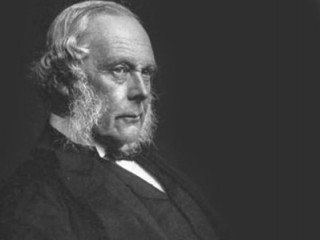
Joseph Lister biography
Date of birth : 1827-04-05
Date of death : 1912-02-10
Birthplace : Upton, Essex, England
Nationality : British
Category : Famous Figures
Last modified : 2010-07-15
Credited as : Surgeon and pioneer of the antiseptic surgery, worked at Glasgow Royal Infirmary,
2 votes so far
Identifying antiseptics and disinfectants has been challenging part of medicine for centuries. Joseph Lister, an English surgeon, contributed to a fundamental revolution in surgery with the introduction of his antiseptic method. At the time Lister was practicing medicine, the mortality rate for certain injuries and surgeries was extremely high due to infection. The mortality rate dropped drastically with the use of an antiseptic method, and when used in conjunction with the anesthetics that were available at the time, surgeons dared to perform more complicated surgical procedures.
Lister was born to a well known Quaker family at Upton, England. Lister studied medicine at University College, and received his medical degree in 1852. As a student, Lister had the opportunity to be a spectator at the first surgery performed with general anesthesia, performed by Robert Liston (1794-1847). He also studied histology under William Sharpey during which time, Lister wrote an important paper on inflammation where he discussed the susceptibility to disease of inflamed tissue. Lister was also interested in microscopic anatomy and physiology--perhaps because his father, Joseph Jackson Lister, was a microscopist. At one point, Lister wanted to become a surgeon and left England to study at Edinburgh University with James Syme (1799-1870), who was well known for his success with performing amputations and joint excisions. Syme, the first surgeon to adopt antisepsis and anesthesia, eventually became Lister's father-in-law.
As a surgeon, Lister was concerned with the high mortality rate of post-amputation patients and the high rate of gangrene after surgery. Applying the knowledge that bacteria caused disease, and drawing from Louis Pasteur's work that proved the existence of airborne microorganisms, Lister concluded that airborne bacteria could cause infection in surgical wounds. Lister read about the affect of carbolic acid used on sewage bacteria in outhouses, cesspools, and stables in the nearby town of Carlisle, and developed an antiseptic system whereby he would spray carbolic acid in the operating room, and use it to sterilize the surgical instruments and his hands. In addition, he applied the acid in and around the wound and directly on the dressings. Lister first used this method in 1865 while treating a compound fracture of a leg, an injury that often claimed about 60% of patients, and where amputation of a limb was usually the only. treatment. The procedure was successful. Lister published his antiseptic method in The Lancet, the highly respected English medical journal, in 1867. There was one problem: carbolic acid, especially the spray, was harmful to those who came in contact with it. However, Lister found milder antiseptics and also heat-sterilized the surgical instruments. At first, the medical community did not support Lister's theory, but eventually his antiseptic method gained recognition and was adopted as standard procedure for treating wounds and during surgery. Medics used Lister's antiseptic method, which proved to be very effective, during the Franco-Prussian War (1870-1871). In 1877, Lister became Professor of Surgery at King's College, London.
Lister received many honors and awards. A dedicated surgeon, he treated both inflicted and surgical wounds; he experimented with various antiseptics, developed absorbable sutures, and introduced a method of draining wounds. He was the first British surgeon to be elevated to the peerage (became a member of the House of Lords), and upon his death in 1912, his remains were interred in Westminster Abbey. When he died, it was said that Lister had saved more lives than all the wars in history had claimed.
















